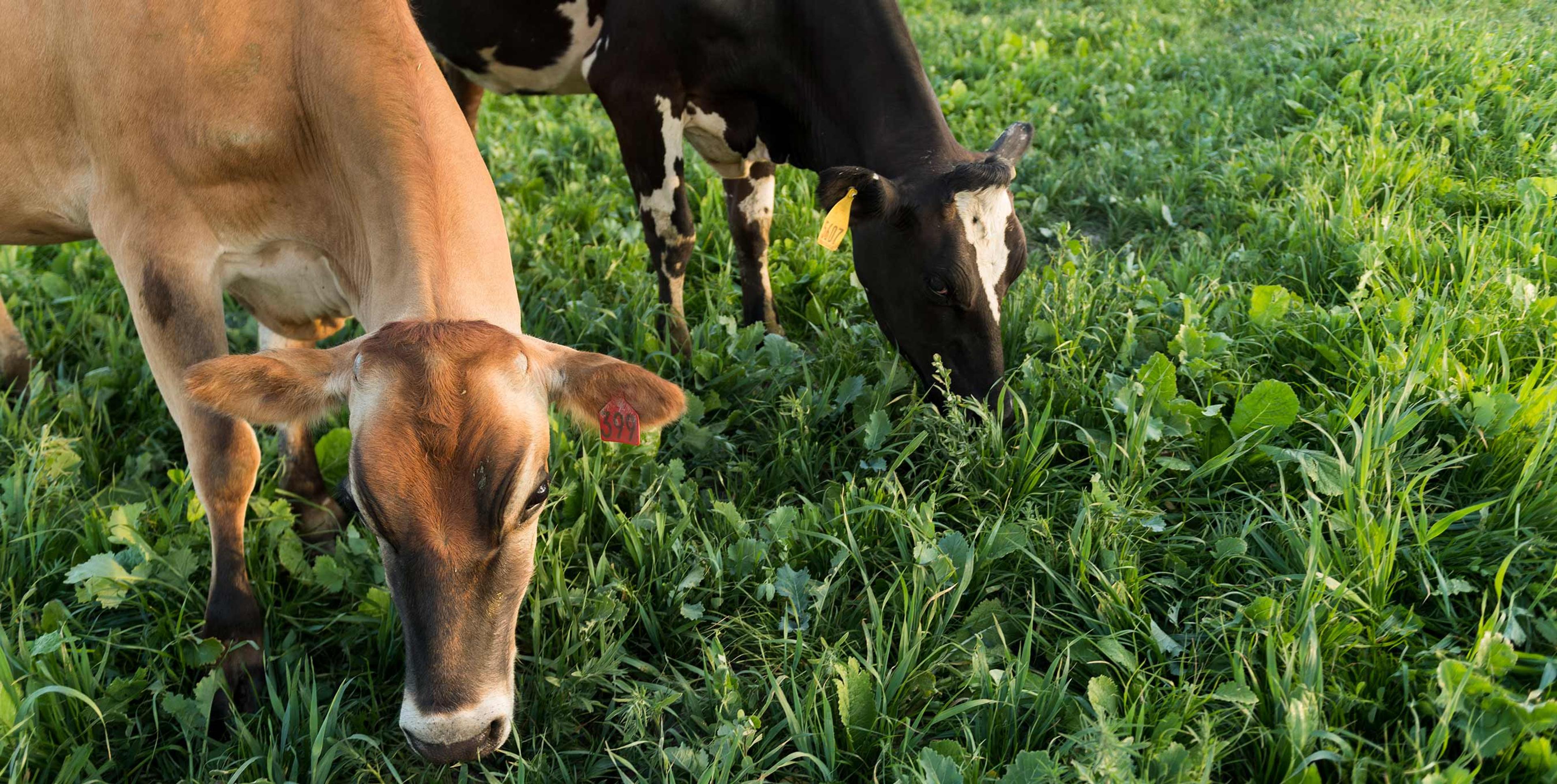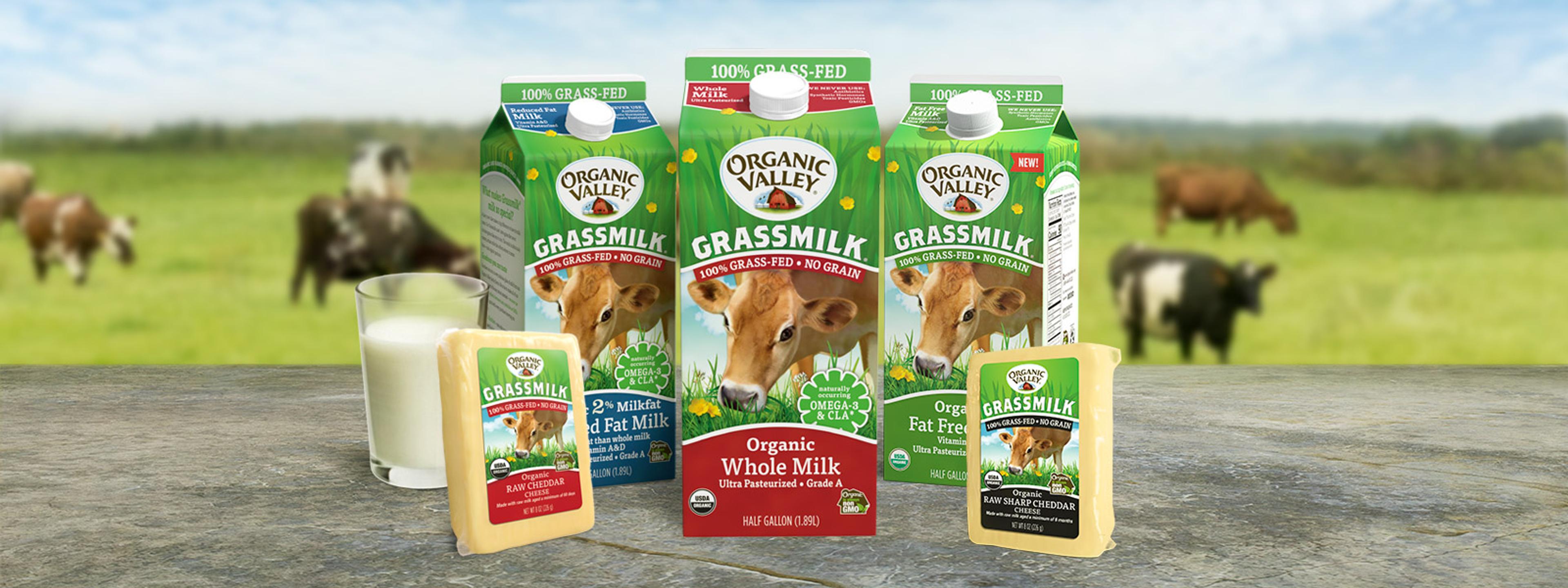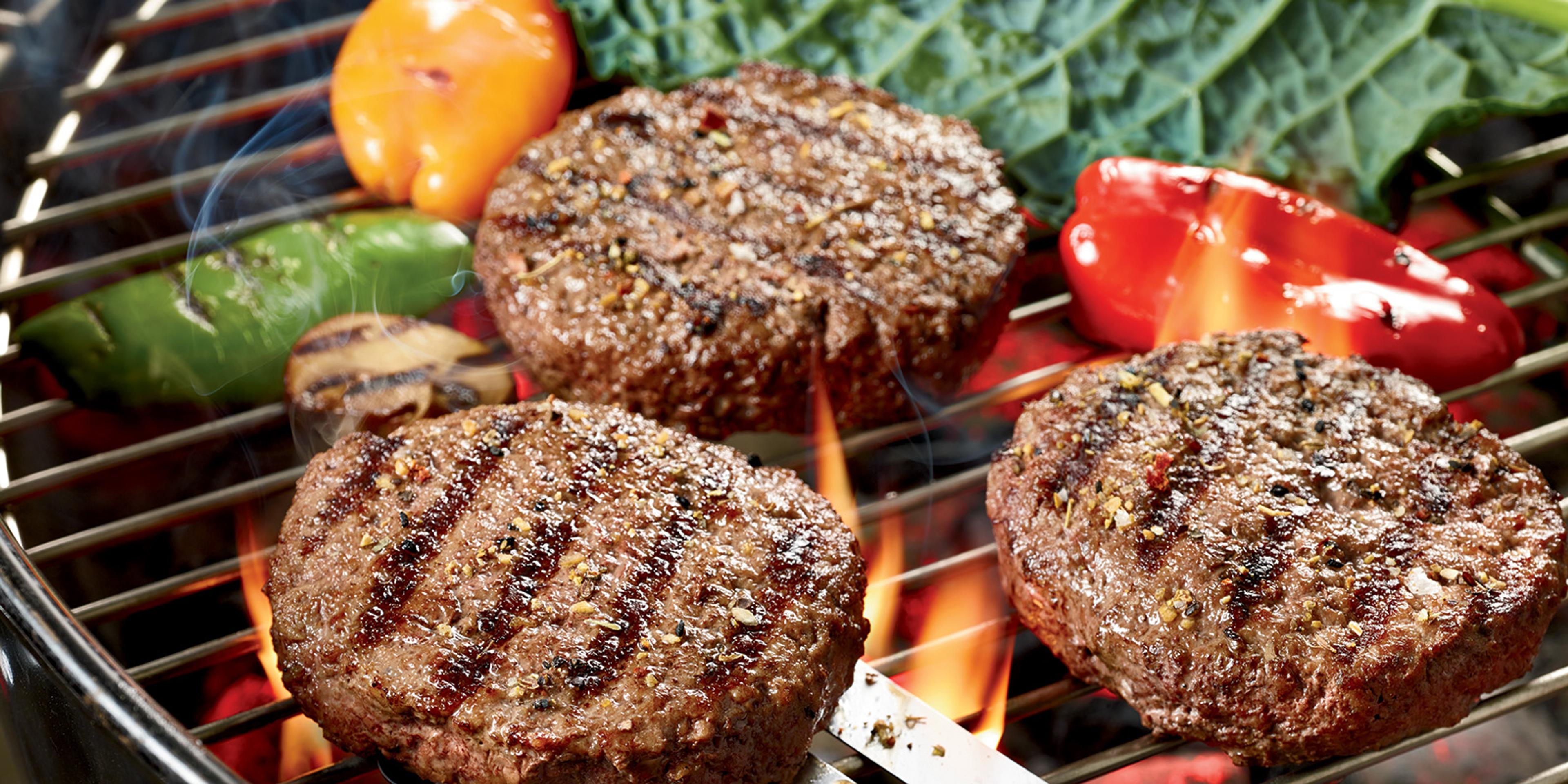
Food
8 Things You Should Know About Grass-Fed Dairy
Animals outside, where they belong, eating what they’re supposed to eat—is it any surprise this makes happy cows and tasty, nutritious milk? Read on to learn why grass-fed dairy just makes sense.
1. All USDA Certified Organic milk is grass-fed to some extent.
USDA Organic standards require that, during the grazing season, all organic dairy cows spend a minimum of 120 days on pasture and receive at least 30% of their diet from fresh pasture grasses. On average across our co-op, Organic Valley farms far exceed this standard, with our pasture-raised cows receiving more than 50% of their diet from pasture during the grazing season.
2. At Organic Valley, "grass-fed dairy" means the cows’ diet is centered on grass. However, the term is not regulated across the dairy industry, and some brands use it very loosely.
The term “grass-fed” can mean a little or a lot of grass in the diet, but at Organic Valley, we’re very picky about how it’s used. To us, "grass-fed" cows should receive the majority of their diet from grass and forages.
To address the problem of inconsistency and confusion around grass-fed label claims, we have worked with other organic industry leaders to launch a Certified Grass-Fed Organic Livestock Program. This certification provides a solid definition for what “grass-fed” means for organic dairy, verifiable standards for third-party certification, and a Certified Grass-fed Organic Dairy seal so that you will know what you’re getting when you see it on organic foods. In fact, Organic Valley's Grassmilk® farms were some of the first to get certified by this new program!

3. 100% grass-fed, grass-fed and pasture-raised are related, but they’re not the same.
These terms describe different, overlapping aspects of how a cow is raised. All Organic Valley cows are pasture-raised and “grass-fed,” but not all are “100% grass-fed.” Our pasture-raised cows may receive a ration of grain to ensure balanced nutrition, but grass and forages still make up the bulk of their diet. (Read more about what “pasture-raised” means here.) To be 100% grass-fed is a very rigorous process, and not all farms (or breeds of cow) are suited to it. Milk from our 100% grass-fed cows goes into our Grassmilk® line of dairy products.
4. 100% grass-fed dairy means exactly what it says: milk from cows that eat grass and only grass.
No corn, no soy, and no other grains, ever. The cows may receive nutritional supplements if needed, like molasses and minerals, but it’s a very small amount — similar to a human taking a daily vitamin. Organic Valley Grassmilk® products are made by 100% grass-fed cows.

5. Organic grass-fed milk and 100% grass-fed milk BOTH contain more beneficial fatty acids.
Peer-reviewed studies have shown that a higher proportion of grass in a cow’s diet translates to measurably higher levels of beneficial CLA and omega-3 fatty acids, and an optimal ratio of omega-3 to omega-6. Learn more.
Organic Valley pasture-raised milk has:
- 62% higher omega-3 than non-organic milk
- 18% higher conjugated linoleic acid (CLA) than non-organic milk
Organic Valley Grassmilk® has:
- 147 percent more omega-3 than non-organic, non-grass-fed whole milk
- 125 percent more CLA than non-organic, non-grass-fed whole milk
6. Organic grass-fed dairy is better for the environment.
Organic agriculture, by definition, does not use toxic chemicals or synthetic fertilizers that contribute to environmental pollution. On top of that, permanent perennial agriculture like pasture has been shown to reduce runoff and build healthier soil. Organic grass-fed is the model for sustainable dairy practices of the future.
7. Grass-fed milk tastes better.
The more grass in a cow’s diet, the more flavor and creaminess you’ll be able to taste in the milk. You can taste it more in 100% grass-fed dairy like our Grassmilk®, and even more so in cultured product like our Grassmilk® cheese, which further concentrate those unique flavors.

8. Grass-fed beef is its own industry, where “grass-fed” (or “grassfed”) is used in a variety of ways.
Similar to grass-fed dairy, feeding beef cows mostly or all grass is also good for the animal and results in beef containing around 50% more beneficial omega-3 fatty acids than non-organic, grain-fed beef. But “grass-fed” is sometimes misused in the beef industry to describe any animal fed grass at some time in its life, even if it’s just a little bit. You might see “grass-finished” on a package, but that doesn’t necessarily mean the cow lived its life grazing pasture. That’s why it’s important to know where your food comes from. If you are looking for organic grass-fed beef, you can trust that Organic Prairie beef products are made from cattle that graze on organic pastures.
Related Articles
- Tags:
- organic nutrition,
- animal care,
- grass-fed,
- food labeling,
- organic & sustainable living

















